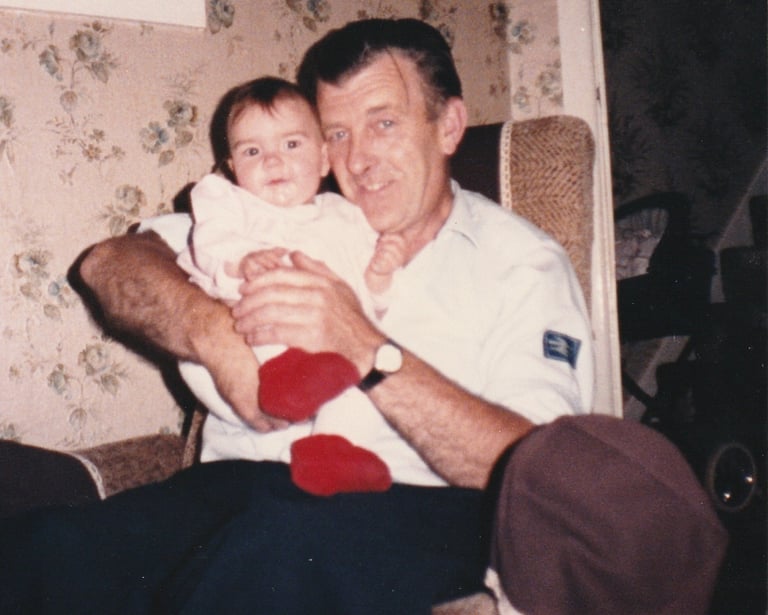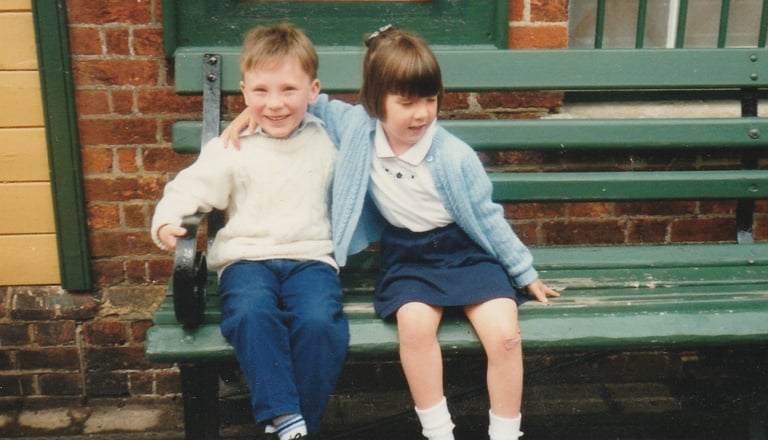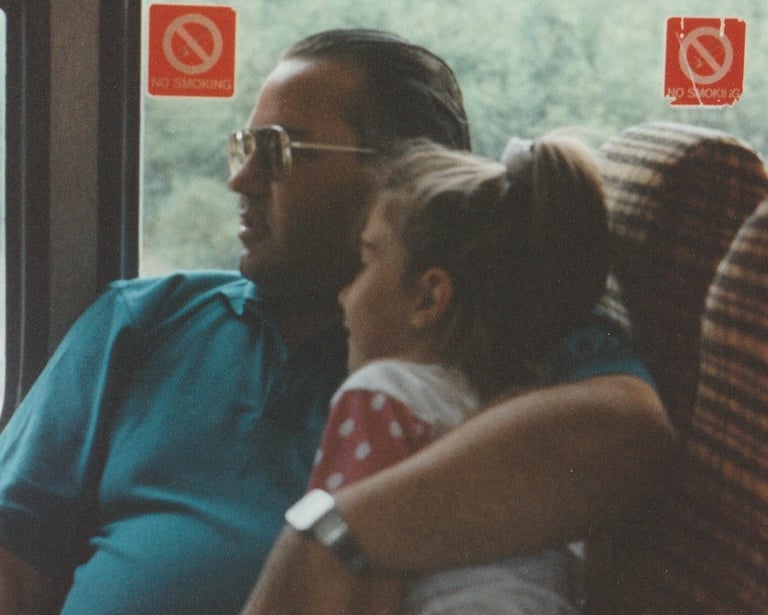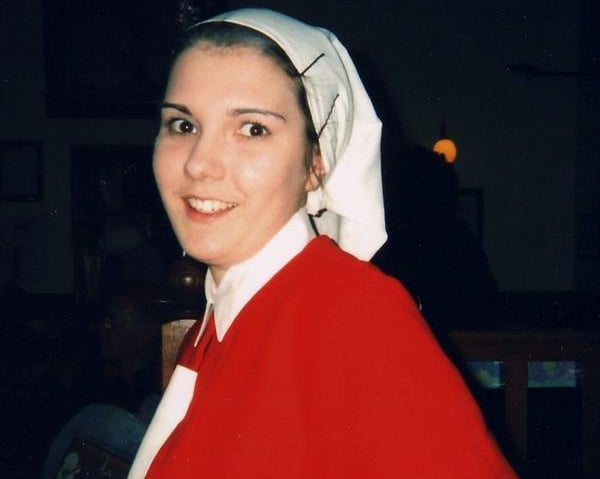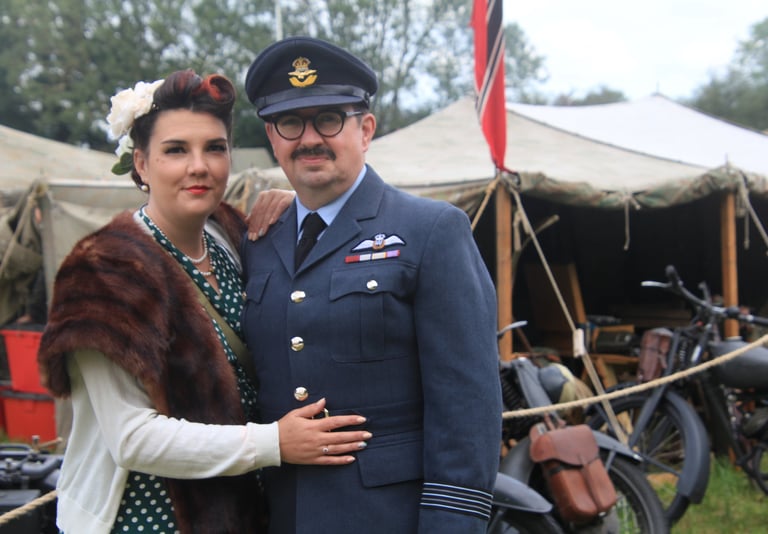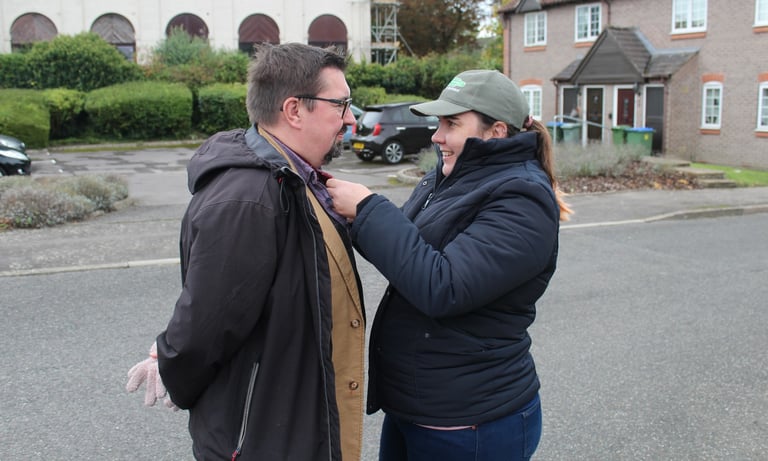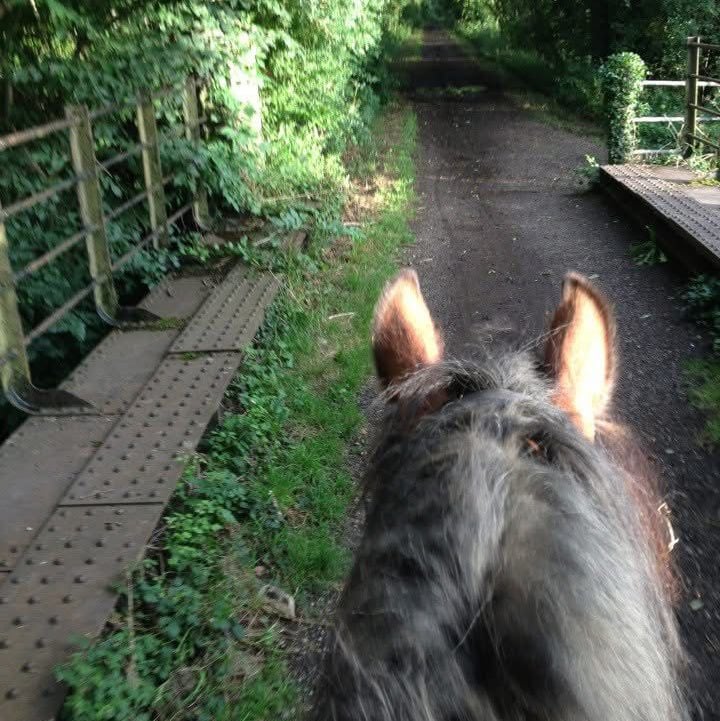Meet Catherine Pope, Production Supervisor
Series Catchphrase: "Sleepover?”
Catherine Pope, Production Supervisor
It’s funny how history seems to follow me — sometimes quietly, like the sound of a distant train, and sometimes right in front of me in the form of a preserved platform, a crumbling signal box, or a family story that sticks in the mind and has to be told.
For me, history has always been something I felt rather than just studied. It’s in the textures of old places, the smell of worn fabric in a museum, the sound of gravel under your shoes as you walk a disused railway line. That connection probably started when I was very young — with trips to museums and heritage sites, often with my Nan and Grandad, who were always happy to encourage my curiosity. They were involved in “Project 5526”, an ambitious plan to return a GWR “Prairie” class tank engine to service on the South Devon Railway, and I remember being completely fascinated. The sound of the engines, the way the staff wore their uniforms with pride, the feel of the carriages... it was like stepping into another time.
It probably helped that my dad worked on the railway too, first as a controller at Eastleigh and then as a mobile operations manager. He was part of that world — part of the machinery that kept it going. I didn’t realise it as a child, but now I see how much of an influence that had on me. The railway wasn’t just something abstract or nostalgic — it was part of my family. Part of our story. My mum’s Dad, Grandad Dave was also involved in the railway, during my childhood he was a Guard for British Rail, and can be seen in one of these photos, proudly displaying his first granddaughter in his uniform. My dad’s job meant the railway wasn’t a far-off relic; it was something that put food on the table and gave shape to our lives. With the privilege of free travel afforded by Dad’s work, most of our days out and holidays involved travelling by train.
I’ve always been drawn to museums. There's something special about the way they hold onto stories, giving us a way to reach back and understand who we are through who we’ve been. Whether it’s local history or industrial heritage, I find comfort and inspiration in those quiet spaces where the past waits to be rediscovered. That love for history is what made Amberley Museum such a natural place for me to volunteer. I started there in the print shop with my Nan and Grandad, before moving on to the bus group to conduct the vintage buses on site. I adored it. There’s something really satisfying about being part of living history — not just preserving it, but actively sharing it. That feeling of being part of a living history experience also shapes another hobby of mine (and Mike’s) - visiting 1940’s events in authentic, period outfits to be part of that connection with the past. In fact, if you’ve been lucky enough to attend one of our preview events you may have spotted me serving tea and biscuits wearing a 1940’s style dress and “victory rolls” in my hair!
It was through my work at Amberley that I met Mike, and that led me into something I never imagined I’d be doing — helping to make a railway documentary. At first, I just helped Mike research his sections of the show; ran through his lines with him and attended some of the filming as support for our friends. I went along and brought cake (I’ve always loved baking, something I inherited from both my Grandmothers) but as time went on I found myself drawn into the process — Soon I was helping contact prospective filming locations, supporting during filming and helping make sure we had everything ready for the shoot. Keen to learn, I was soon helping with camera setups, before I knew it, I was formerly made Production Assistant on the show, helping bring to life the story of the Shoreham to Horsham railway line.
As time progressed, I found myself supervising other production assistants who had come to assist with the filming work and was made production supervisor December 2024, a job title reflecting more responsibility.
Working on the series opened my eyes to just how much goes into telling these stories. There’s a lot of logistics, of course — permission for locations, scheduling, travel arrangements and weather watching — but also a lot of thought about how we tell a story. It’s not just dates and facts; it’s about people, atmosphere, memory. What the railway meant to a community. What was lost when the line closed. What still lingers.
Walking the old routes has become one of my favourite parts of the job. There's something eerie and beautiful about disused railway lines — the way nature takes over, the clues that are still visible if you look closely. Cuttings, embankments, gateposts, even just the way a footpath curves unnaturally — they all hint at what was once there. And every site has its own story. Visiting Steyning and finding the remains of the old platform and site of the signal box were just magical, especially when I found the remains of the chain used to attach the platform bench to the station wall. Of course, Stephen presented it in the show as if he’d just spotted it, but I was very proud that it was found by me, crawling through the undergrowth the weekend before we filmed that made this happen.
Outside of the documentary, I’ve always kept myself busy. I work in tax, which is practical and steady, but outside of that I have a lot of interests that keep me grounded. I do crochet in the evenings — there’s something therapeutic about it. I go horse riding when I can — the connection with the animals, the peace it brings, it’s hard to describe but easy to feel. I used to ride my first horse, Sarge, on the old Meon valley line and was always curious about the relics that were left behind.... I was tracing the rails long before the project even started! You can see my view from Sarge as we cross a bridge on the old line next to this.
Oh, and I dance. Modern jive has been a big part of my social life, and I love the freedom and fun of it. All these things help keep me balanced, and in their own way, they all connect back to the same thing — community, movement, rhythm, and story.
I’m not a historian or filmmaker by trade, but I bring curiosity, care, and a love of stories. Tracing the Rails has been such a rewarding project, not just because of the work, but because of what it’s taught me. That you don’t need to be a professional historian to care about history. That passion, curiosity, and a willingness to listen can be just as important as credentials. I’ve learned that there are countless stories still waiting to be told — not just in grand museums or books, but out there in the fields, in the bricks of an old bridge, or in the memories passed down from someone’s granddad who once caught the 8:12 to work.
This isn’t just a project for me — it’s personal. It's about honouring the places and people that shaped us, and making sure they're not forgotten. As long as we keep tracing the rails — literally and metaphorically — we keep those stories alive.
Looking ahead, I’d love to do more in this space. Telling stories. Preserving history. Helping people connect the dots between past and present. There’s something really special about uncovering what was once ordinary — a timetable, a siding, a footbridge — and making it extraordinary again by simply noticing it, recording it, remembering it.
Working on this series hasn’t just taught me about railway history. It’s reminded me that we all have our own tracks — some overgrown, some still in use — and that sometimes the best journeys happen when you follow a line just to see where it used to go.
